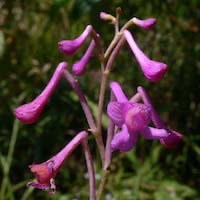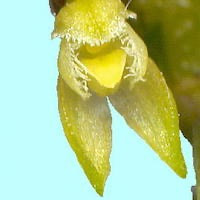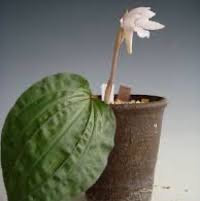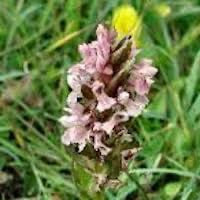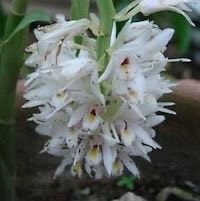WWD4- Women's Woody 4 - You spice up my life
|
Native Singaporean Orchid notes: Phalaenopsis Violacea
Phalaenopsis Violacea is a captivating orchid species known for its violet-colored flowers and intense fragrance, featured in the perfume "Woody 4 (Women)" for a team-building workshop. Discovered by Johannes Teijsmann in 1859, it blooms in spring on a pendulous inflorescence, each 10 to 12.5 cm long, bearing 2 to 7 flowers sequentially. These delicate blooms, approximately 3.5 cm wide, emit a strong violet scent, with some varieties displaying green edges on their tepals, enhancing their beauty.
|
Therapeutic Orchid notes:
|
Anthogonium gracile Wall ex Lindl.
Anthogonium gracile, also called the barrel petal orchid, is a small terrestrial orchid found in Sri Lanka, the eastern Himalayas, and southern Chinese provinces like Xizang, Yunnan, Guizhou, and Guangxi. It also grows in northern Myanmar, Thailand, Laos, and Vietnam. Known for producing Batatasin III, an antifungal phytoalexin, it holds medicinal value in Chinese (Tongban Lan) and Thai (Wan phrao) traditional medicine. It's used primarily to treat menstrual disorders and is believed to have pain-relieving properties. |
|
Bulbophyllum inconspicuum
Bulbophyllum inconspicuum, also known as the Wheat Orchid or Mugiran in Japanese, is valued in traditional medicine for its diverse therapeutic uses. It is believed to effectively treat fevers, various types of coughs such as whooping cough, bronchiectasis, and those associated with tuberculosis. Additionally, it addresses yin imbalances due to febrile illnesses and polydipsia. This orchid is also used for easing joint pain and swelling, alleviating children's fright, treating acne, healing skin ulcers, managing menstrual irregularities, and relieving toothaches. |
|
Changnienia amoena Chien
Changnienia amoena, also known as the Solitary Flower Orchid or Duhua Lan in Chinese, is valued for its fragrant blooms and medicinal properties. It is harvested mainly in regions like Zhejiang, Jiangsu, Hunan, and Sichuan in China. In traditional medicine, the herb is used to treat ailments such as coughs with bloody phlegm, sores, and skin boils. The entire plant, including its roots, is known for its cooling effects on blood and antiheat properties, making it beneficial in traditional remedies for various health issues. |
|
Dactylorhiza incarnata (L.) Soo
The Early Marsh Orchid, also known as Dactylorhiza incarnata, grows in wet areas like bogs and meadows across Europe, from Ireland to Sweden, and even in places like the Middle East and parts of China. In Turkey, its tubers are harvested to make a popular drink called salep, enjoyed for its creamy texture and flavor. It's important to gather these orchids carefully to protect their habitats and ensure they continue to thrive in the wild. |
|
Geodorum attenuatum Griff.
Geodorum attenuatum, known as Dahuadibao Lan in Chinese and Euong po in Thai, grows on the edges of lowland forests in regions like Hainan Island, Indochina, Thailand, Myanmar, and Yunnan. In Thailand, its pseudobulbs, which store nutrients, are used in traditional medicine for their tonic effects, believed to promote health and vitality. It's important to use herbal remedies cautiously under professional guidance and to conserve wild plants like orchids to safeguard their habitats and populations. |
Other scent note
Scentopia Library Reference ingredient
Agave - Check details at Scentopia's scent library
Download the guided mediation that works best with this Orchid fragrance oil
| women_woody_essential_oil_orchi_00004.mp3 | |
| File Size: | 190044 kb |
| File Type: | mp3 |

